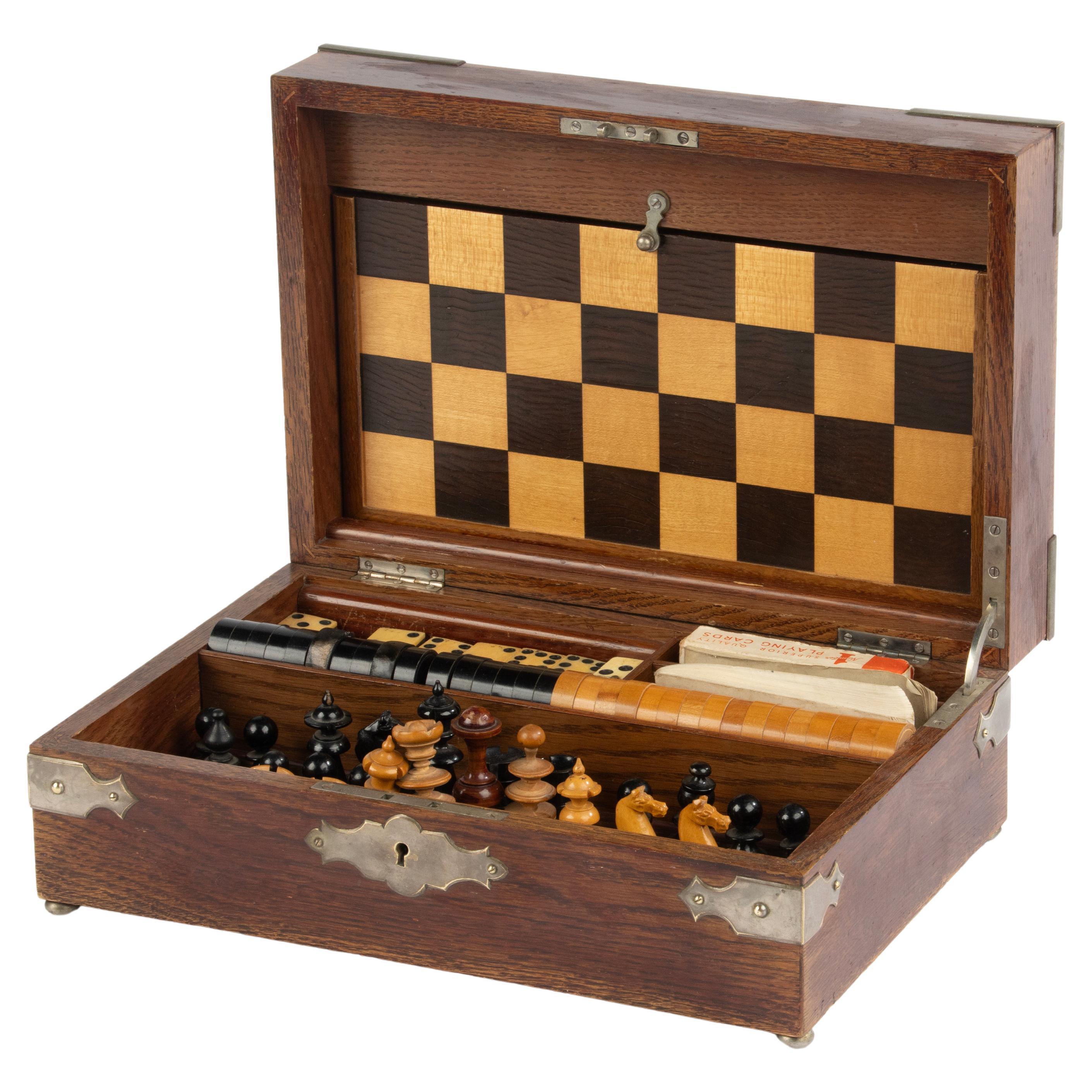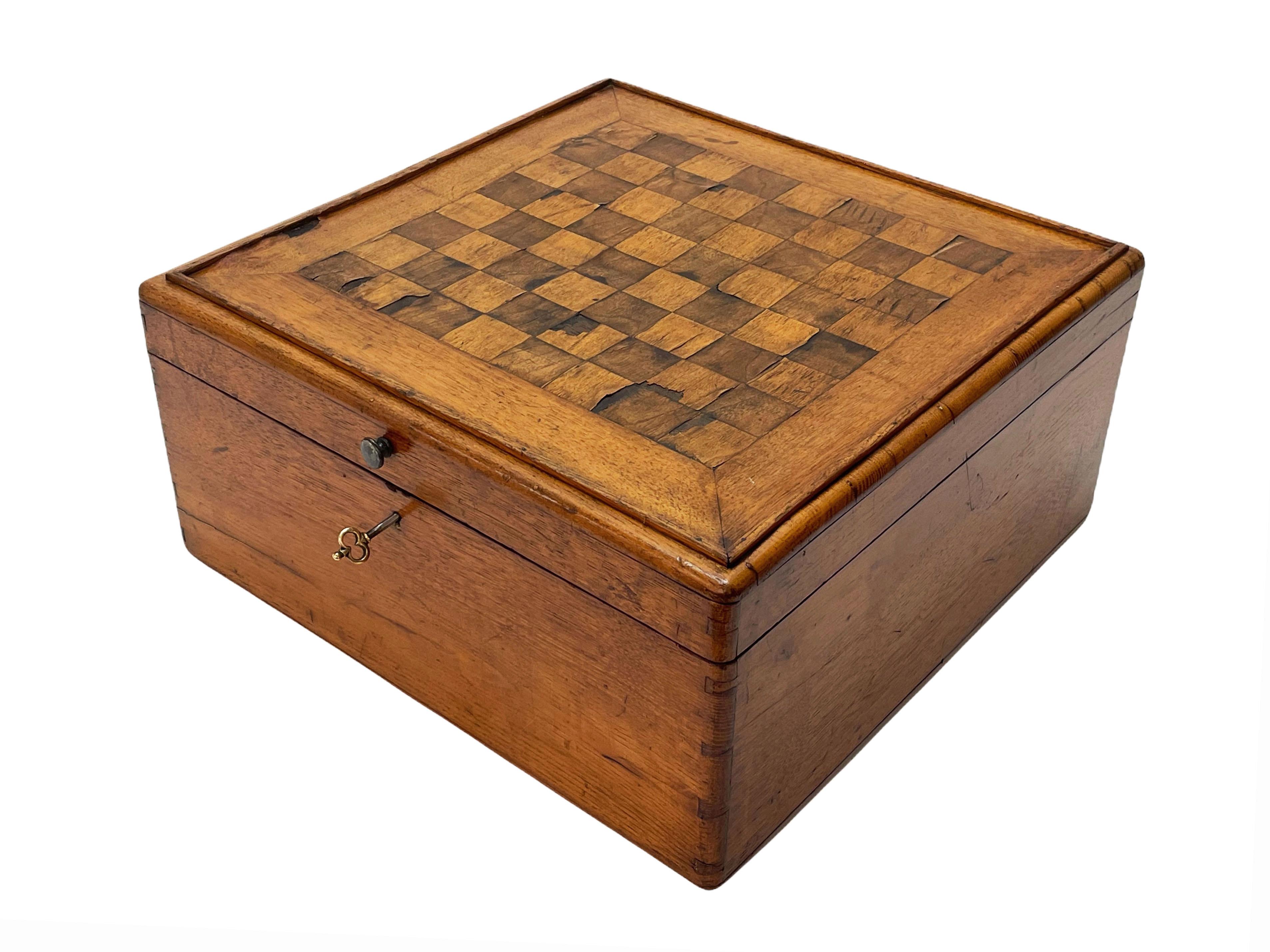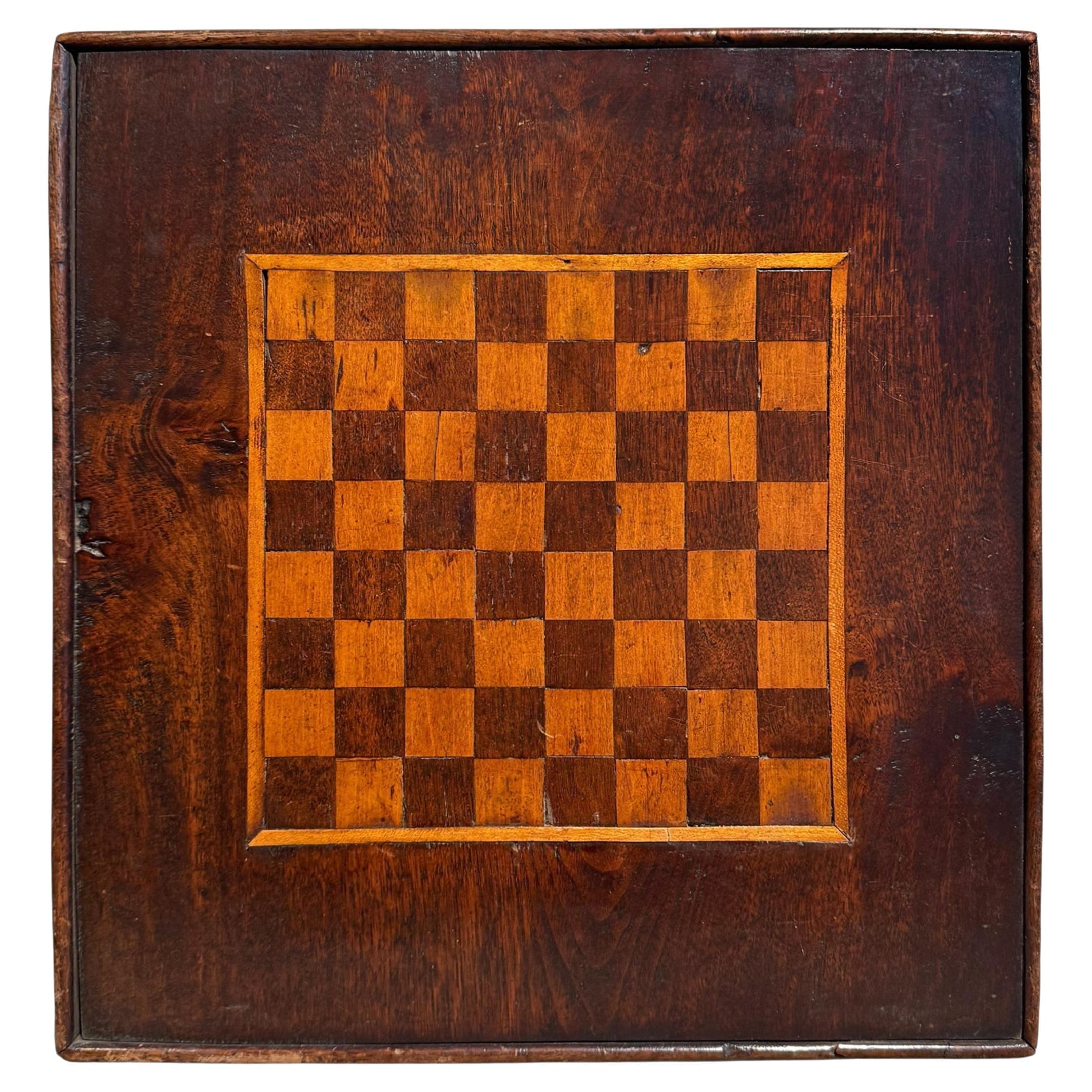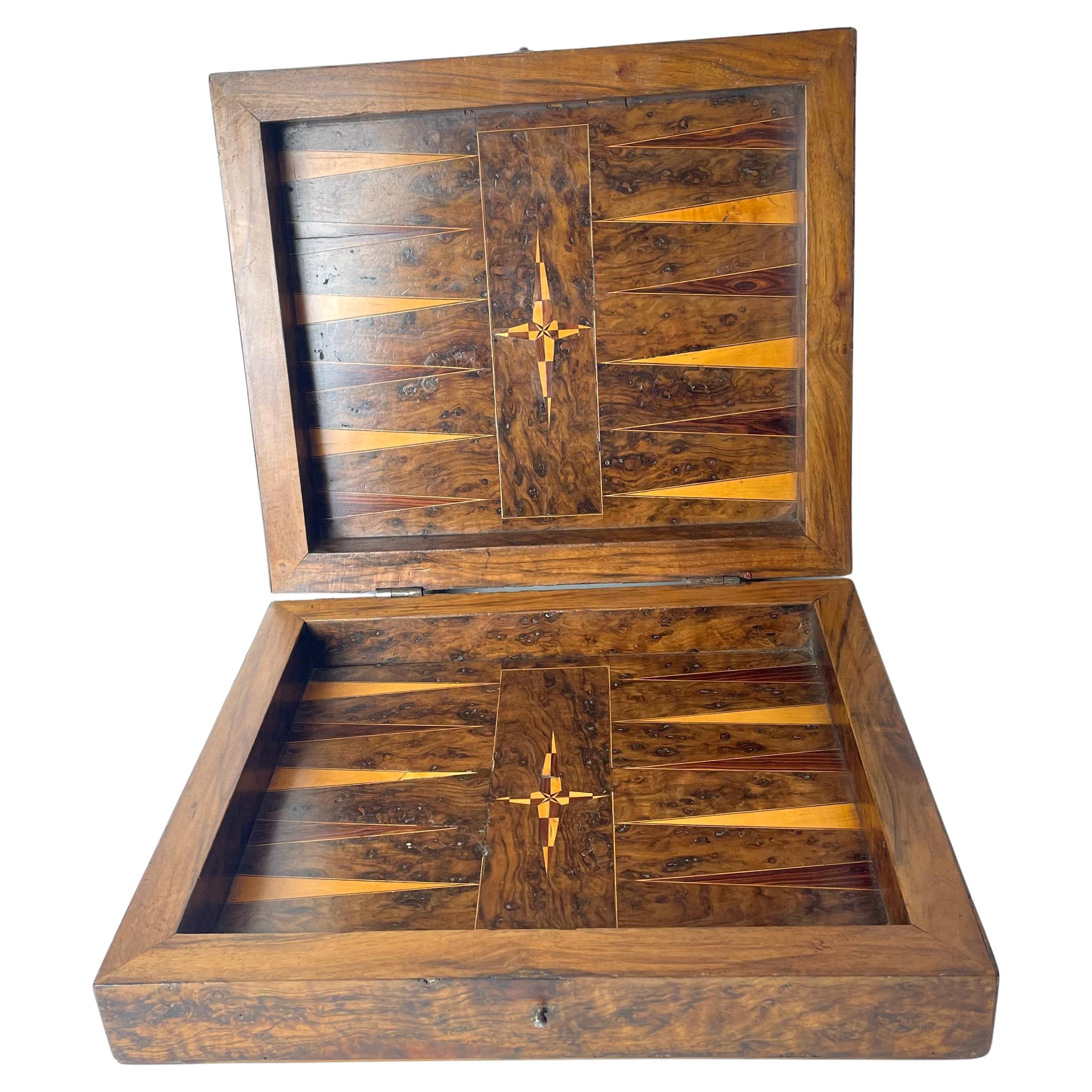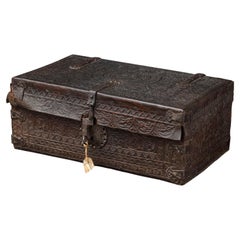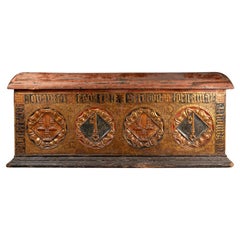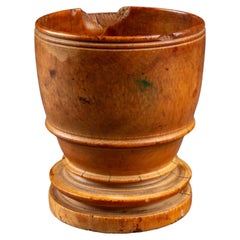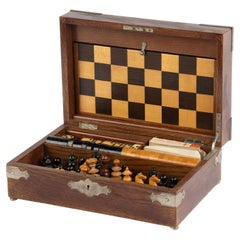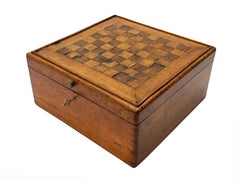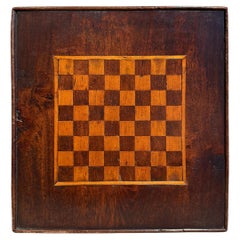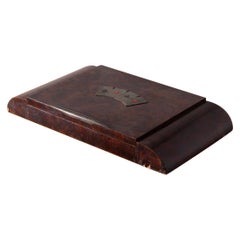Items Similar to Wood and leather game box - Italy, 19th century
Want more images or videos?
Request additional images or videos from the seller
1 of 6
Wood and leather game box - Italy, 19th century
$2,008.47
£1,505.47
€1,700
CA$2,759.30
A$3,080.49
CHF 1,614.13
MX$37,708.27
NOK 20,499.50
SEK 19,328.42
DKK 12,941.02
About the Item
Wood and leather game box for chess, Nine men’s morris and Backgammon
Italy, 19th century
33 x 33,3 x 11,2 cm
Nine men’s morris also known as mill game (merelles, from the Latin world merellus which means « gamepiece ») is a strategy board game for two players dating to the Roman Empire. The board consists of a grid with twenty-four intersections or points. Each player has nine pieces, or "men", coloured black and white.
In the opposite side, the chessboard is decorated with 64 light brown and dark brown squares.
The leather interior has a tray for the game of Backgammon with 24 arrows grouped in 4 compartments.
Very nice patina and good conditions; some white and black pieces are missing.
- Dimensions:Height: 13 in (33 cm)Width: 13.08 in (33.2 cm)Depth: 4.41 in (11.2 cm)
- Style:Arts and Crafts (Of the Period)
- Materials and Techniques:
- Place of Origin:
- Period:
- Date of Manufacture:19th century
- Condition:Wear consistent with age and use.
- Seller Location:Bruxelles, BE
- Reference Number:1stDibs: LU6666230979842
About the Seller
5.0
Vetted Professional Seller
Every seller passes strict standards for authenticity and reliability
1stDibs seller since 2022
15 sales on 1stDibs
Typical response time: 2 hours
- ShippingRetrieving quote...Shipping from: Bruxelles, Belgium
- Return Policy
Authenticity Guarantee
In the unlikely event there’s an issue with an item’s authenticity, contact us within 1 year for a full refund. DetailsMoney-Back Guarantee
If your item is not as described, is damaged in transit, or does not arrive, contact us within 7 days for a full refund. Details24-Hour Cancellation
You have a 24-hour grace period in which to reconsider your purchase, with no questions asked.Vetted Professional Sellers
Our world-class sellers must adhere to strict standards for service and quality, maintaining the integrity of our listings.Price-Match Guarantee
If you find that a seller listed the same item for a lower price elsewhere, we’ll match it.Trusted Global Delivery
Our best-in-class carrier network provides specialized shipping options worldwide, including custom delivery.More From This Seller
View AllBoiled Leather Trunk, Spanish, 17th Century
Located in Bruxelles, BE
Leather trunk
Spanish, 17th century
Boiled Leather, wood and iron
Measures: 22 x 53 x 32 cm.
Provenance :
- collection Metz-Noblat, Château de Clevant, France
Rectangular trunk of the form and size of a small suitcase with wrought iron hinges and lock-plate.
Wood, covered with leather, cut and embossed with every surface of the thick cow hide covered in interlace, zoomorphic features.
The construction method is boiled leather, often referred to by its French translation cuir-bouilli: a process used to change flexible, vegetable-tanned leather into rigid, moulded objects. For shaping of the vegetable-tanned leather, heat and moisture were used, as indicated by the term boiled leather. No written medieval sources describing the production of decorated cuir bouilli objects survive, so knowledge of the process relies on the important studies of the Scottish leather historian John William Waterer. A large range of methods, materials and techniques could be used in various combinations. The vegetable-tanned leather, made supple with moisture and heat, was stuffed, shaped and nailed to the rigid wooden coffer support. The stuffing material was probably modeled beeswax or stearin wax. To shape the leather, to create its topography, « Cushions » were made by lacing a thread through an awl hole and attaching the flexible leather and stuffing to the rigid wooden support on the bottom. Then the decoration was done: lines were incised through the upper layer of the leather (epidermis) with different thicknesses of knives or needles. Contours were created with deep v-shaped cuts, decoration with thin incision and final details with a needle point. For the incision and pouncing stage, the leather was probably kept heated and moistened for suppleness.
Once dry, the leather would be hard and rigid.
the saturated leather is worked over a form, possibly even damp sand, with the pattern shaped using bone or wooden tools. Compare to metal, leather was lighter and it offered protection from cuts and punctures. Cuir bouilli objects were produced by specialist leather workers and needed skillful craftsmanship.
The surface is filled with roundels shaped foliages enclosing animals, lions and peacocks. The foliate arabesques creating a vegetal connection tweet the animals create the impression of a lush verdant space . The vegetal pattern here employed in combination with geometrical pattern came from the pre-islamic artistic traditions of the Byzantine and Sasanian empires. An aspect of Islamic geometry Is the basic symmetrical repetition and mirroring of the shapes that create a sense of harmony.
The decoration of this truck is inspired by the islamic « arabesque » a form of vegetal ornament composed of spirals, intertwining plants and abstract curvilinear motifs. An arabesque character is given to the birds of the decorations through extreme stylisation. This arabesque maintained the classical tradition of median symmetry, freedom in Detail and heterogeneity of ornament.
The presence of the peacocks is a paradisiacal allusion: in popular Islamic literature they were among the original inhabitants of the garden of Paradise expelled with Adam and Eve. Peacock as a decorative motif may have originated in the West, despite their eastern provenance. There was an ancient belief that the flesh and feathers of peacock do not decay. This led to the peacock becoming a christian symbol for Christ’s resurrection.
Renowned for their decorative wall hangings, seventeenth-century Spanish leatherworkers also produced utilitarian objects, such as this trunk. A similar trunk is on display at the Metropolitan museum of art ( 09.158.1).
Related literature :
Davies L. 2006. Cuir bouilli. Conservation of leather and related materials, 94-102, Oxford: elsevier Butterworth-Heinemann
Grabar, Oleg. The Mediation of Ornament. Princeton: Princeton University Press, 1992
Gabriela Germana Roquez, "El mueble en el Peru en el siglo XVIII...
Category
Antique 17th Century Decorative Boxes
Materials
Iron
Rare pastiglia marriage chest - North of Italy, First half of 15th century
Located in Bruxelles, BE
Rare pastiglia marriage chest
North of Italy, Liguria or Piemonte
First half of 15th century
wood, gesso, partly gilded, form molded and painted
67 x 156 x 63 cm
Provenance :
Pri...
Category
Antique 15th Century and Earlier Italian Renaissance Blanket Chests
Materials
Gesso, Wood
Dutch Tobacco Jar - 19th century
Located in Bruxelles, BE
Dutch Tobacco Jar
Netherlands, 19th century
23 x 15 cm
Georgian Dutch Tobacco Jar. Made from different woods, this ring turned Jars show a very nice patina.
Category
Antique 19th Century Dutch Georgian Snuff Boxes and Tobacco Boxes
Materials
Fruitwood
17th century apothecary's ivory mortar - Indo-Portuguese
Located in Bruxelles, BE
17th century apothecary's ivory mortar
Apothecary's ivory mortar 9
Indo-Portuguese
17th century
Cites certificate number IT/CE/2023/MI/01108
11 x 9,5 cm
Category
Antique 17th Century Indian Renaissance Scientific Instruments
Materials
Ivory
Dutch Tobacco Jar - 19th century
Located in Bruxelles, BE
Dutch Tobacco Jar
Hollande, 19th century
H 18 x diameter 12 cm
Fine Georgian Dutch Tobacco Jar with beautiful patina.
Category
Antique 19th Century Dutch Georgian Snuff Boxes and Tobacco Boxes
Materials
Wood
Turned, Engraved Openwork Box, Florence, 17th Century
Located in Bruxelles, BE
Turned, engraved and openwork box
Fruit wood
Florence, 17th century
Measures: Diameter 11cm
Height 4.4cm.
Category
Antique 17th Century Italian Renaissance Decorative Boxes
Materials
Wood
$756 Sale Price
20% Off
You May Also Like
19th Century Game Box - Oak - Chess and Checkers - Dominoes
Located in Casteren, Noord-Brabant
A beautiful antique English games box, including the games chess, checkers and dominoes.
The game box is in good condition and complete. Please note that two black checkers have a sl...
Category
Antique 1890s English Late Victorian Games
Materials
Oak
Early 20th Century Large Wooden Inlaid Squared Italian Chessboard Box, 1900s
Located in Roma, IT
Exquisite large wooden inlaid squared chessboard box. This fantastic item was designed in Italy during the beginning of the 20th century.
This handmade box is fantastic because it has an amazing chessboard made of a combination of pine and oak wood squared pieces. The inside part is very large and can be closed with a key that is included.
A wonderful piece that is perfect for completing a neoclassic living room...
Category
Early 20th Century Italian Other Game Boards
Materials
Wood, Oak, Pine
19th Century American Folk Art Game Board
Located in Chicago, IL
Beautifully hand-crafted and quietly sculptural, this 19th-century American Folk Art game board was made not in a factory, but by someone who clearly knew their way around a piece of...
Category
Antique 19th Century American Folk Art Game Boards
Materials
Maple, Walnut
$1,800 Sale Price
25% Off
Italian box containing games in burl ART DECO
Located in Milano, IT
This extraordinary Art Deco-style game box represents a veritable treasure trove of 1920s Italian design and entertainment. Made of fine walnut burl, it is distinguished by the refin...
Category
Vintage 1920s Italian Art Deco Games
Materials
Metal
Antique Inlaid Folding Wooden Game Board
Located in Bridgeport, CT
An antique inlaid folding wooden game board with backgammon and checkerboard/chess board on the reverse side. The chess board with individual inlaid boxes and a string inlay border. ...
Category
Antique 19th Century Unknown Game Boards
Materials
Wood
Late Baroque Games Box Chess Backgammon Decorated with Rich Wooden Interior.
Located in Knivsta, SE
A beautiful Late Baroque Box used for Chess/Backgammon and Nine Men’s Morris Game pieces. Rich interior and exterior decorated with different types of wood, including olive, walnut and birch. Late 17th Century/Early 18th Century.
This charming games box features intarsia of wood veneer in several different types wood. The top of the box is a chess board decorated with three types of wood. The opposite side of the box is a board for Nine Men's Morris, an antique playing...
Category
Antique Late 17th Century European Baroque Games
Materials
Birch, Olive, Walnut
